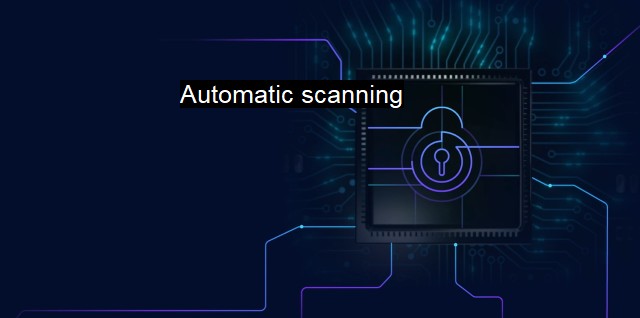What is Automatic scanning?
Enhancing Cybersecurity through Automatic Scanning: A Comprehensive Approach to Detecting Malware Threats and Vulnerabilities in Computer Systems.
Automatic scanning is a critical aspect when discussing cybersecurity and antivirus. It comprises advanced software technology designed to execute spontaneous, regular inspections of a computer system or network, searching for viruses or malicious programs. automatic scanning refers to the systematic inspection of your computer's hard drive or connected network without the need for direct human supervision or intervention. The salient role its plays in the cybersecurity paradigm cannot be understated, given that it works in the background to prevent any kind of unauthorized access, disruptions, or alteration to an information security system.Predominantly, automatic scanning is an indispensable feature of antivirus software. Antivirus software harnesses this function to scrutinize all files and software stored on the computer or passing through it. The software searches for any instructions written in the code of these files that may identify them as viruses, malware, adware, ransomware, or any other type of malicious code. Any hint of something suspicious triggers the antivirus into action.
Although manual scanning offers more control to users, automatic scanning offers a continuous form of protection. It continuously works on its own, ensuring all files and programs are thoroughly checked, thereby eliminating the risk of overlooking any potential threats. To put it succinctly, while manual scanning is like a manual health check-up, the automatic scanning is akin to a real-time health monitoring process that never stops.
Automatic scanning can be classified into two types: real-time scanning and scheduled scanning. Real-time, as the name suggests, checks files and programs as soon as they are accessed or created. It keeps a vigilant watch on the system activity so that potential hazards can be identified at the earliest time possible. In contrast, scheduled scanning can be set according to the user's preference, where the user can decide when the scan should be performed.
The advantages of automatic scanning are plentiful. Aside from the obvious role of identifying and fending off threats, automatic scanning also frees up time for users, reducing computer maintenance efforts. Since the scanning process is done automatically, users can focus more on their work, while the antivirus takes care of system security.
On the downside, automatic scanning can sometimes cause system lag, especially for older computer systems with low processing power since the antivirus software needs resources to run in the background. there may be instances of false positives, where the antivirus software might identify a harmless file or program as a threat. these cons largely outnumber the immense benefits of automatic scanning in protecting our systems.
Automatic scanning can be seen as one of the silent warriors of our digital world. In the context of cybersecurity and antivirus protection, it provides a crucial line of defense against not just recognized threats but new, evolving ones. In today’s digital age, filled with potential risks and unseen threats, automatic scanning in-built within antivirus software provides invaluable reassurance to users by eliminating security threats in their nascent stages, thus saving time, data, and even potential financial resources that could have been lost to scrupulous activities.

Automatic scanning FAQs
What is automatic scanning in cybersecurity and antivirus software?
Automatic scanning is a feature of cybersecurity and antivirus software that automatically scans a device or network for potential threats and vulnerabilities. This helps identify and prevent malware, viruses, and other security risks before they can cause harm.How does automatic scanning work in cybersecurity and antivirus software?
Automatic scanning works by scanning the device or network for known patterns of malicious code or behavior. The software uses a database of known threats and suspicious activity to identify and quarantine any potential threats. The scanning typically occurs in the background, with the user receiving notifications if any issues are detected.What are the benefits of using automatic scanning in cybersecurity and antivirus software?
There are several benefits to using automatic scanning in cybersecurity and antivirus software. These include identifying and removing malware and viruses before they can cause harm, regularly checking for vulnerabilities and weaknesses in the system, and improving overall security posture. Automatic scanning can also save time and resources by running in the background, without interrupting regular operations.What can I do to ensure automatic scanning is working correctly in my cybersecurity and antivirus software?
To ensure automatic scanning is working correctly, make sure your software is up-to-date and has the latest virus definitions and threat intelligence. You should also regularly check that automatic scanning is enabled and configured correctly, and review any notifications or alerts from the software. It's also important to regularly perform manual scans and security audits to supplement automatic scanning and ensure complete coverage.| | A | | | B | | | C | | | D | | | E | | | F | | | G | | | H | | | I | | | J | | | K | | | L | | | M | |
| | N | | | O | | | P | | | Q | | | R | | | S | | | T | | | U | | | V | | | W | | | X | | | Y | | | Z | |
| | 1 | | | 2 | | | 3 | | | 4 | | | 7 | | | 8 | | |||||||